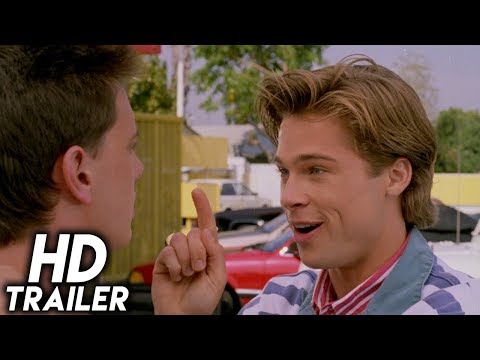Drunken Film Fest Bradford 2020: Six Winning Shorts
The fifth annual Drunken Film Fest in Bradford, England, wrapped up this past November, running nine days with 79 shorts total. Though the pandemic forced the festival online this year, when in-person, DFFB relies on local venues for the “drunken” component and international filmmakers for the “film” part. But the real intoxication at DFFB and its sister fest, Drunken Film Fest Oakland, comes from the cinema. This year, the six winning shorts crowned at DFFB represent a passionate, multicultural, and, at times, wonderfully bizarre mélange of movies, from gambling films to music videos to breastmilk flooding the world.
Living Room (Jessica Barclay Lawton)
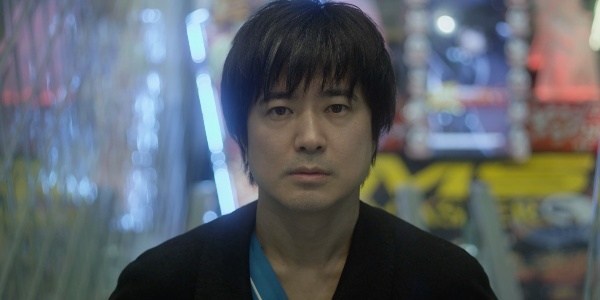
Arriving from the Cannes Court Métrage, Jessica Barclay Lawton’s short follows Masayuki (Masaaki Aoi), an unemployed, middle-aged Japanese man who spends his days’ gambling. When he gets home, he hides his winnings from his mom (Sonoko Kameoka) in a Ziploc bag under the sink like he’s in The Lost Weekend. She thinks he still has a day job, after all, so he needs to keep his source of income under wraps.
Neon lights and pachinko parlors dominate Living Room. The visual stimulation and ballet of lights and reflections pull us and Masayuki in and help us to understand why he’s resigned himself to gambling all day. Lawton and cinematographer Alex Cardy juxtapose that intoxicating dance of lights with Masayuki’s confined, dimly lit home, where the extreme closeups and dark interiors make him seem hollow and withered. The equally evocative soundscape (designed by Gunay Demirci) resembles the sound of blood rushing in your ears, or like immense pressure being exerted on you, like Masayuki is underwater.
Lawton gives Living Room the neon allure and cigarette-tinged milieu of a 1940s American crime film. The quiet vestiges of Yasujirō Ozu’s films and the plastic playground of Wim Wenders’ Tokyo-Ga are gone, and Lawton transforms the country into an unpredictable, foggy landscape, void of physical and emotional intimacy. Still, as Masayuki wanders through the city, Lawton peels back more layers of both Japan and her depressed protagonist. Living Room is immersive and inventive, always surprising us with some odd new quirk of plotting, sound editing, music, or performance that adds deliberate surrealism and vivacity to the otherwise familiar story.
Lavender (Andrew Ball-Shaw)
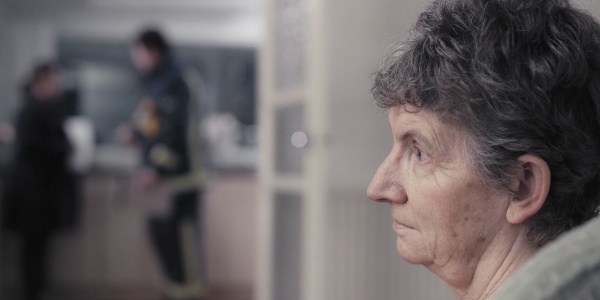
When Andrew Ball-Shaw’s Lavender begins, it immediately lives up to its name with a dreamlike opening awash in purple tones. A young couple picnics in a field of lavenders with red wine and pastrami sandwiches, each of them dressed in red or blue, and a lilac filter gives even the sky a periwinkle tone. It reminds me of Jorge Jácome’s film Flores, which is also taken over by this oppressive purple filter, about the people of the Azores Islands beset by a plague of hydrangeas. The affliction in Lavender, though, is a mental one — Fern Gledhill (Libby Wattis) has dementia, and at the story’s beginning, her daughter (Caroline Vella) is considering whether to put her in a care facility.
Vella and Wattis fill Lavender with simmering ache, and their honest, subdued performances give the impression of a funeral. Ball-Shaw’s script even provides Vella a eulogy for Fern, which she delivers from the kitchen while her mother sits in the other room, unaware. But it’s Richard Collins who makes Lavender sing — he’s credited with the music, and he and cellist Matt Hawken fill the picture, especially the dream sequences, with a searing, heartbreakingly patient score. The film is scored nearly wall-to-wall, but I wouldn’t lose a second of it.
A kitchen-sink drama infused with cerebral pathos, Lavender thankfully doesn’t just stop at that, trying to show more than just the medical crisis at the film’s core, looking at the history Fern is losing. And oddly, though the drama wasn’t really working for me until the end, there’s a really painful, strong moment at the film’s denouement that I found devastating. Perhaps it’s the solemn score, or maybe it’s the inevitability of the ending. Fern’s finale makes us cry, the dream sequences neatly resolve in a purplish tide, and we end on an allusion to, of all things, Bong Joon-Ho’s Mother — our matriarch dancing alone to non-diegetic music in a windswept field.
Year of the Robot (Yves Gellie)
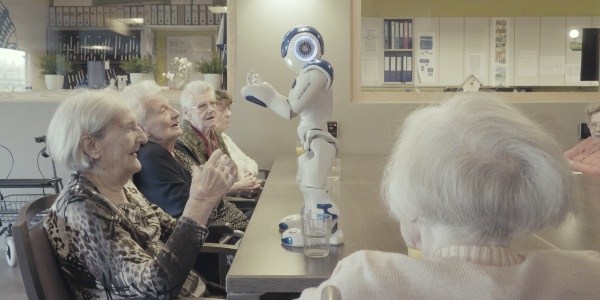
Year of the Robot, a French documentary short about technological innovation in a nursing home, marks the directorial debut of doctor-turned-photojournalist Yves Gellie. It pairs excellently with Lavender, as both works map the degradation of the human mind and our attempts to slow that collapse.
Gellie reveals virtually no information about the setting or the circumstances of the film, but a bit of Googling (and a 2018 New York Times piece) reveals that over 1,000 of these robots, named Zora after their company, ZoraBots, have been around for several years and sold to nursing homes and hospitals all over the world. There seems to be only one Zora in Gellie’s home, but it’s easy to assume otherwise; we never see other medical staff, it’s just the robot, and it’s a constant presence in the residents’ lives.
As Zora engages the seniors with exercise, song, dance, and checkers, Year of the Robot feels like sci-fi, like Robot & Frank or WALL-E. But Gellie keeps the doc clinical and elegant with stark, wide framing and lighting, a purely observational mode that asks us to focus less on the robot and more on its relationship with the residents. The robot becomes a child in their care, and love it or hate it (and a number of residents seem to hate it), Zora brings life to these residents in a way little else seems to. It’s a child to teach, care for, and admonish, but it’s also their mentor, helper, and dance partner.
The film’s musical scenes are its strongest when Zora regales a group of dining seniors with a recording of “Non, je ne regrette rien” that it mimes along to, or later when it dances with a woman to a Parov Stelar track. She becomes someone else when dancing like she’s 20 years younger, but as soon as the song ends and Zora tries to make conversation, the woman slinks away, silent and a little embarrassed.
Nice Shoes (Jonathan Lawrence)
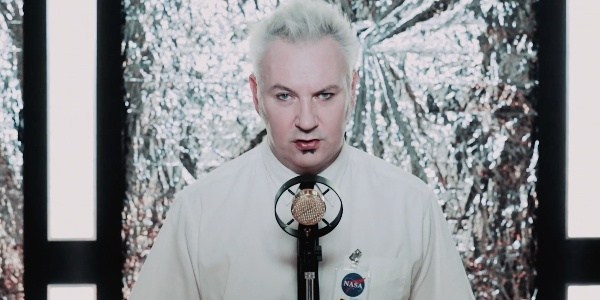
Retrofuturist reverie fills Nice Shoes, a music video for the alt-funk song by Tommy Mack, featuring Bowman ASHE. The video starts with a riff on The Twilight Zone’s iconic opening sequence and voiceover, then dives headlong into a medley of film references. Mack, who also stars, fights Men in Black–style agents to get an alien from Area 51, then escapes using the TARDIS — look, the video isn’t supposed to make sense, and neither are the lyrics, which flirt with existentialism (“At the end of the day, you say/ I am everything and I am nothing”) but always fall back on the refrain, “You’ve got nice shoes.”
The drum loops, record scratches, and metal riffs anchor the track, while Lawrence’s video runs a marathon through dozens of film and TV references, only some of which I understood. (My favorite is when Mack looks at his watch and it’s the clock laborer from Metropolis pushing the hands.) Each reference, be it District 9 or Alien, brings a host of lighting, scenery, and cinematography challenges that Lawrence nails, as he has to not only mimic, say, Alien’s visual style, but also keep verisimilitude with the rest of the music video.
Nice Shoes is obsessed with consumerism and an enthusiastic, wild celebration of geek culture. The TARDIS, the Blade Runner interiors, the Buckaroo Banzai walk, even the song’s dated ’90s vibes represent an unabashedly gleeful diversion, like pop culture is a safe space when our present is overwhelming. Maybe the “nice shoes” chorus makes sense after all — you’ve got a Star Wars box set, you’ve got a stack of Nirvana vinyl, you’ve got nice shoes. All this stuff represents a world you can escape to.
The Annunciation (Rosana Cuellar)
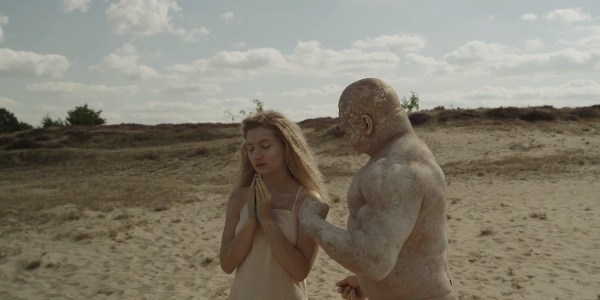
Rosana Cuellar’s avant-garde The Annunciation is in otherworldly, Martian territory. Its two characters are a young blonde girl (Samantha Hoefer) and a nearly naked strongman, who’s played by German actor and musician Rummelsnuff. The landscape is all barren savannah and sand, and Rummelsnuff’s covered in white paint and dirt, which reminded me of the centrality of ochre body paint in indigenous Australian culture. There’s no dialogue.
Not only are its performances and ominous soundscape alien, but even the way the camera moves has an ethereality to it. The film is one long two-minute take, and cinematographer Thomas Oswald’s camera glides over the characters (likely on a massive jib arm) but then moves in for a closeup, only to pull completely out again for a long shot.
The work, which is produced by Wim Wenders, is purposefully vague, though the title references Gabriel’s appearance to the Virgin Mary. I, for one, had no idea what was going on, yet found The Annunciation fun probably because of that. The terseness of the film and the abrupt smash to credits without ever explaining itself is bold, and I wish more films dared to be uncompromisingly cerebral films and short — both because I don’t know if this would work as a 10-minute-plus film and because a quick glimpse into Cuellar’s world can distill all the power of her filmmaking and the surrealness of the story without overextending.
Mother and Milk (Ami Lindholm)

The Finnish animation Mother and Milk begins with a birth, and the baby has a cute little wrinkly face and button nose. But it’s not cute for long — the baby cries, doctors rush in and open the mother’s scrubs to try to breastfeed it, and no milk comes out. From this innocuous opening scene comes a flood of anxiety — literally, as once Mom starts breastfeeding, her breasts won’t stop pouring out milk.
The stress of motherhood soon meets apocalyptic circumstances and turns to abject horror as her breastmilk fills the house and then buries the town, and she and her husband are left to paddle a mattress through the maelstrom (or, in this case, the femaelstrom). The skies darken, and the animation turns greyer the more dystopian Mother and Milk becomes, but writer-director Ami Lindholm maintains grace and levity throughout. The oil pastel–style animation (the lead animator is Sanni Lahtinen), coupled with the lack of dialogue and emphasis on quick, slapstick movements, ensures that Mother and Milk’s anxiety is never too overwhelming.
The story evolves again, from disaster-horror into a surprisingly abstract delirium. Mom sees her mom before her, who sweeps her to her breast. Välnö Sipalä’s score swells as the same happens for her mom’s mom and her mom’s mom’s mom. Each generation of women gives life to and supports the next as Lindholm posits breastmilk as an essential currency for the entirety of the human experience. This revelatory sequence and the broader film, in general, are one of the great delights of the festival, and a deep, complicated experience that capitalizes on the charming opening and endearing animation style — a human continuum formed entirely on the transaction and ritual of breastfeeding.
Learn more about Drunken Film Fest here.
Does content like this matter to you?
Become a Member and support film journalism. Unlock access to all of Film Inquiry`s great articles. Join a community of like-minded readers who are passionate about cinema – get access to our private members Network, give back to independent filmmakers, and more.
Join now!


